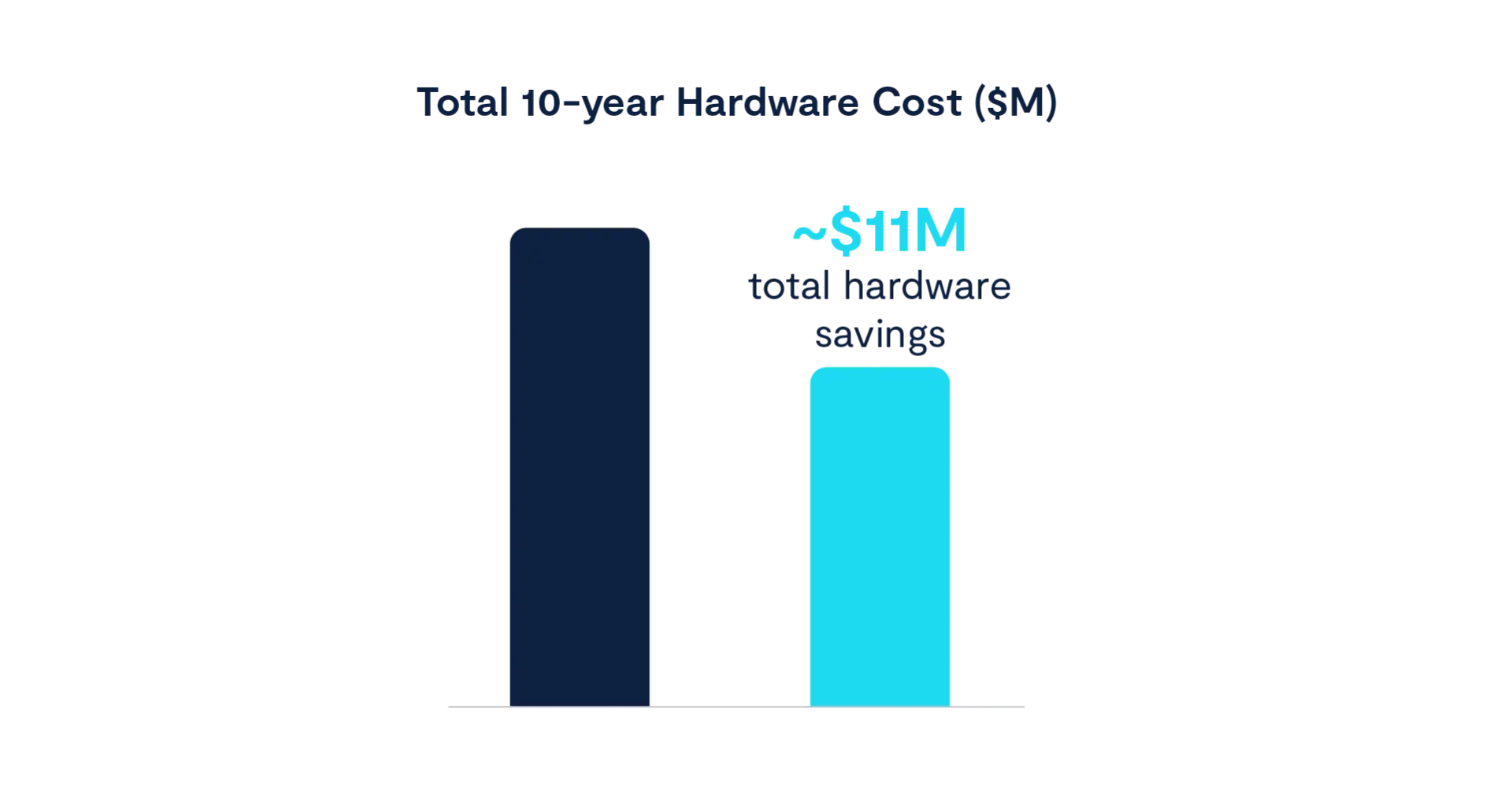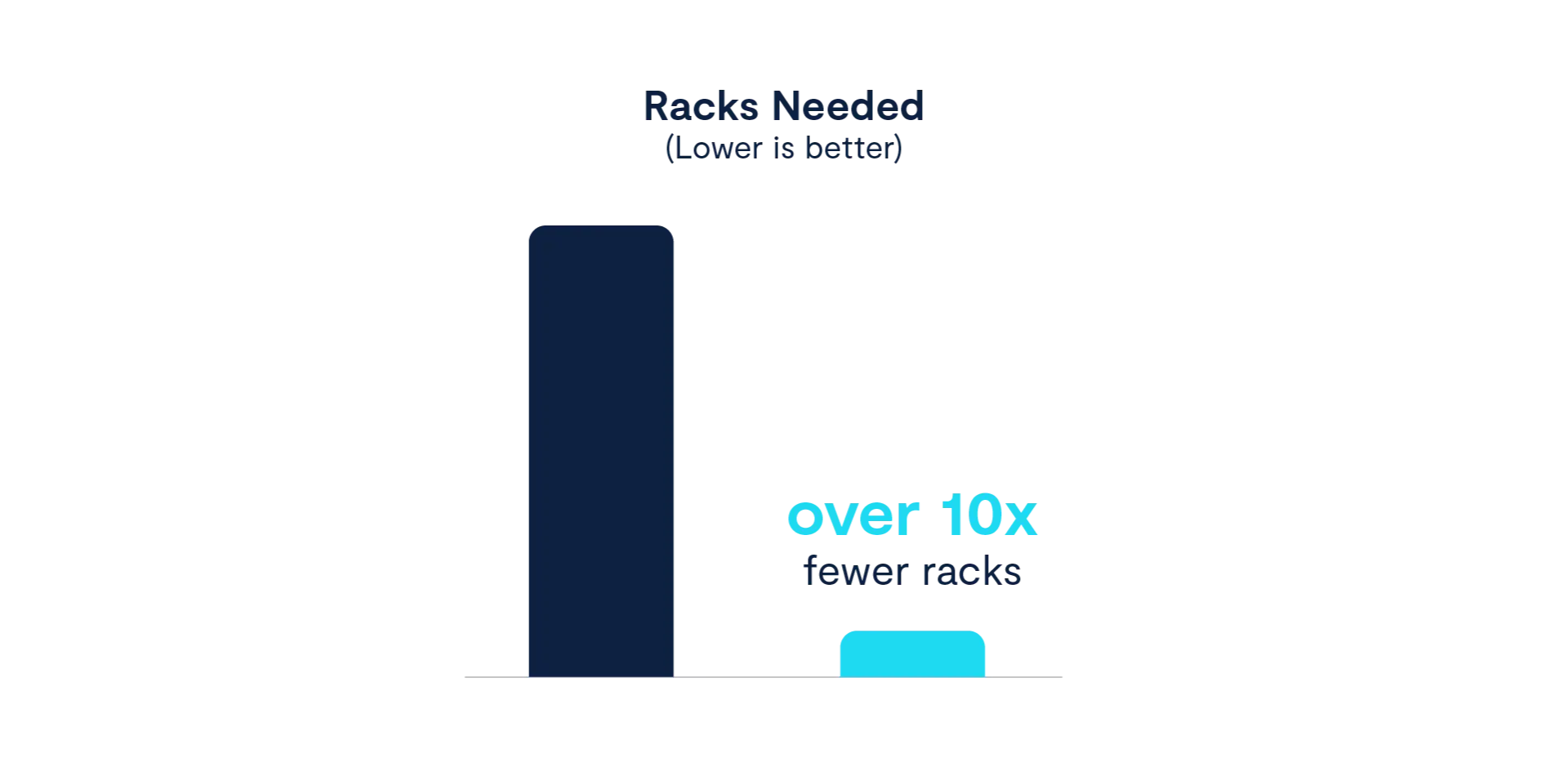For years, enterprise IT has played a strategic, often frustrating, game of resource allocation. Flash storage devices, with their undeniable speed, were the prized assets - reserved for the “hot tier,” the critical applications, the workloads requiring the lowest latencies and the highest throughput. The rest of the “warm” or “cold” data was relegated to slower, more economical HDD tiers. This was the accepted compromise, a necessary balancing act between performance and budget.
However, when analyzing the Total Cost of Ownership (TCO), that equation has been inverted. Flash now provides a superior economic advantage. A whitepaper by Solidigm and VAST quantifies this, revealing that flash offers a 58.9% lower TCO than traditional HDD tiers.
Recent innovations from Solidigm and VAST are changing storage economics and eliminating the tiered storage paradigm completely. It is not cheaper to store cold data on flash. The cheapest medium for data is flash. Gone is the need for tiers, and with them the auto-tiering policies, the need for separate storage cluster designs, and the constant moving of data.
The Technology Driving the Economic Shift
Current hardware and software architectures have fundamentally altered storage economics, making a universal all-flash infrastructure more cost-effective than traditional hard drive systems. This shift is driven by two key innovations working in tandem.
- Hardware Breakthroughs in Density: The primary hardware change is the introduction of Solidigm’s 122-layer QLC NAND flash, which provides unprecedented storage density. This allows for a massive reduction in the physical footprint of storage systems.
- Compounding Software Efficiencies: These hardware gains are amplified by VAST’s innovative software.
- VAST’s advanced Similarity data reduction technique goes far beyond standard compression to find and eliminate redundancy at a granular level, meaning you need nearly 3x less raw storage capacity compared to HDD solutions. This level of granular data reduction can only be practical on flash because spinning media depends on sequential data for speed. When duplicate data is removed, many sequential reads look like random IO, which flash drives excel at, but HDDs struggle with.
- Locally decodable codes provide an extremely efficient and resilient form of data protection, further enhancing cost-effectiveness by reducing wasted overhead.
- VAST Foresight is an intelligent data placement feature that groups data based on its predicted retention time before writing it to QLC flash, a strategy that improves the endurance and extends the lifespan of the storage system.
- Crucially, this entire solution is built for longevity. By offering 10-year support on QLC SSDs, the VAST platform eliminates the costly and disruptive hardware refresh cycles required by HDD systems every few years.
Together, these technologies mean a VAST system can store significantly more data on less physical hardware. An Exabyte of data that once required 52 racks of HDDs can now fit into just 5 racks, cutting data center space costs by over 90% and power and cooling costs by more than 75% leading to a total cost of ownership (TCO) that is over 50% lower than traditional HDD-based systems.
The Proof is in the Numbers: A TCO Analysis
All of this is now documented in a 10-year Total Cost of Ownership (TCO) analysis. While this analysis focuses on a 1EB deployment, the technical and economic advantages delivered by the platform begin at the smallest VAST cluster and extend to Zettabyte (ZB) scale. These savings come from several compounding factors:
1. Eliminating Refresh Cycles: Traditional HDD infrastructures require costly and disruptive hardware refreshes every 3-5 years. The VAST Data platform offers 10-year support on QLC SSDs, avoiding multiple hardware repurchases and the associated labor costs. While the initial outlay for the SSD/VAST solution might be higher, the total 10-year hardware cost is nearly 30% lower because those expensive HDD refresh cycles are eliminated.

2. Effective Data Reduction: VAST’s Similarity data reduction technology achieves remarkable data reduction rates without the performance penalties that cripple deduplication solutions on HDDs. Because HDDs depend on sequential I/O, HDD based tiers often use little to no effective data reduction (modeled at 1:1). The result: you need only one-third of the raw physical storage capacity with VAST compared to an HDD solution to achieve the same usable capacity.

3. Higher Density, LowerFootprint: The combination of Solidigm's ultra-dense 122TB SSDs and VAST's software efficiencies means a dramatically smaller physical presence. What might require 52 racks for an Exabyte of usable HDD storage can be consolidated into just five racks with the Solidigm + VAST solution. This translates into over 90% savings in data center space costs and a power and cooling cost reduction of over 75%. Together, the lower power and space requirements support more sustainable data center operations.


This combination of extended hardware life, superior data reduction, and higher density fundamentally rewires the economics of enterprise storage.
When flash is no longer a scarce, premium resource, the whole equation of enterprise computing changes. IT leaders no longer have to ration performance or make uncomfortable compromises between speed and cost. Instead, they can design around possibilities:
- AI at Full Fidelity: With flash now the most economical tier, enterprises can finally train and analyze on their entire data history, not just today’s “hot” subset. Aquatic Capital Management, for example, uses VAST to unify decades-worth of structured and unstructured market, documentation, and proprietary data into a single high-performance flash infrastructure—giving researchers both full corpus fidelity and extended historical breadth. As their Head of Infrastructure notes: “the more different multi-variant data sources that they can assemble, the more accurate their models can become.” The result? AI models that are smarter, more contextually rich, and more accurate—made possible by collapsing the old trade-offs of cost, speed, and retention.
- Analytics Without Delay: The NHL rebuilt its media platform on VAST, shifting a massive video archive onto flash and expanding into real-time game-footage operations so editors and teams can cut highlights and move content while games are still underway. With replication across all 32 arenas, the league shortened the path from capture to distribution and set itself up for computer-vision and AI discovery on the same library.  A flash-backed foundation turned archival footage into something you can actually work with in the moment, rather than overnight.
- Operational Agility: At spinTwo, VAST transformed months-long life sciences compute workloads into just weeks, freeing researchers to focus on discovery instead of infrastructure headaches. As their team notes: “With VAST Data, we process large datasets much faster, allowing scientists to spend more time on research rather than waiting for data to process. What used to take years, can now be completed in weeks, and we’re working to reduce that to hours.”   This kind of performance lets developers and data scientists spin up full datasets on the fly, test new pipelines, and iterate rapidly, without entangling in storage approvals or juggling quotas.
A New Era of Storage Economics
Tiering solved an old cost problem. This Solidigm + VAST study shows that a single all-flash tier wins on the numbers: 58.9% lower 10-year TCO, 5 racks instead of 52, power and cooling down by more than 75%, and space costs down by more than 90%. Density, Similarity data reduction, locally decodable protection, and 10-year media support combine into a simpler system that stores more data on less hardware.
To see the model and assumptions, read the Solidigm + VAST TCO analysis. To get a custom TCO analysis for your business, schedule time with a VAST Sales Engineer.



